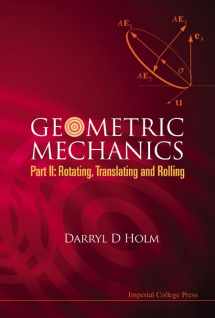
Geometric Mechanics, Part II: Rotating, Translating and Rolling
Book details
Summary
Description
This textbook introduces the tools and language of modern geometric mechanics to advanced undergraduate and beginning graduate students in mathematics, physics, and engineering. It treats the dynamics of rotating, spinning and rolling rigid bodies from a geometric viewpoint, by formulating their solutions as coadjoint motions generated by Lie groups. The only prerequisites are linear algebra, multivariable calculus and some familiarity with Euler Lagrange variational principles and canonical Poisson brackets in classical mechanics at the beginning undergraduate level.
Variational calculus on tangent spaces of Lie groups is explained in the context of familiar concrete examples. Through these examples, the student develops skills in performing computational manipulations, starting from vectors and matrices, working through the theory of quaternions to understand rotations, and then transferring these skills to the computation of more abstract adjoint and coadjoint motions, Lie Poisson Hamiltonian formulations, momentum maps and finally dynamics with nonholonomic constraints.
The 120 Exercises and 55 Worked Answers help the student to grasp the essential aspects of the subject, and to develop proficiency in using the powerful methods of geometric mechanics. In addition, all theorems are stated and proved explicitly. The book s many examples and worked exercises make it ideal for both classroom use and self-study.
Contents: Galileo; Newton, Lagrange, Hamilton; Quaternions; Quaternionic Conjugacy; Special Orthogonal Group; The Special Euclidean Group; Geometric Mechanics on SE(3); Heavy Top Equations; The Euler Poincaré Theorem; Lie Poisson Hamiltonian Form; Momentum Maps; Round Rolling Rigid Bodies.


We would LOVE it if you could help us and other readers by reviewing the book
Book review



